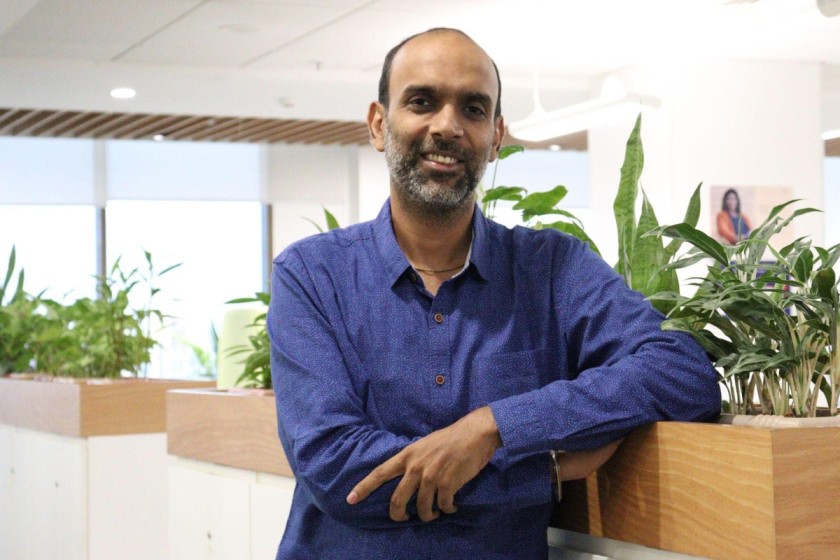- July 19, 2024
Inside Roche India’s strategy room: Turning collaborations into gold

CFO India interviewed Rahul Kedia of Roche on strategic partnerships, their impact, ROI, and integrating sustainability into decisions.
In a market as vast and diverse as India, strategic partnerships are not just advantageous, they’re essential for a healthcare company like Roche. But how does Roche choose the right partners, balancing the need to strengthen existing offerings with the drive to venture into new therapeutic areas? In this exclusive interview with CFO India, Rahul Kedia, Cluster Head of Finance – India, Middle East and Africa, Roche, shares his approach to forging successful collaborations, measuring their impact, and integrating sustainability into every decision.
Q. How do you prioritize strategic collaborations/partnerships that strengthen existing pipelines versus those that accelerate entry into new therapeutic fields?
Rahul: As a company, we firmly believe that strategic partnerships are essential for success in India. The country’s vastness and the immense unmet need within the diabetes sector present a challenge that can be addressed in two ways. One is to expand independently, but this requires substantial manpower, resources, and investment. Even then, complete coverage remains a hurdle. To put it simply, India has approximately one million retail pharmacies and a vast network of hospitals, all potential points where we aspire to serve patients.
However, a balanced approach is key. The decision to rely solely on our own capabilities versus leveraging the strengths of others is crucial. This is where strategic partnerships become invaluable. Our goal is not merely to expand our market penetration but to enhance the value and support we offer patients – our company’s core mission.
We are actively pursuing and fostering these partnerships. Several existing collaborations have already proven successful in extending our reach and penetration across various regions.
Q. Please talk about a few recent collaborations and how they have impacted your company’s bottom line.
Rahul: We are actively exploring the burgeoning med-tech sector, with various proposals and propositions under consideration. While it’s too early to provide concrete figures, we are making significant strides. In terms of distribution, several recent partnerships have expanded our retail coverage, delivering our products to locations previously unreachable through Roche’s direct network.
This progress has been swift, with most initiatives launched within the last year. While the full impact remains to be seen, we, as a management team, are confident in this approach. We anticipate further advancements in both operational efficiency and strategic positioning, particularly as we integrate future product pipeline developments.
Q. Please talk about the indicative ROIs that have resulted from these collaborations.
Rahul: Each partnership is unique, with specific criteria for selection. Potential partners must meet our compliance and financial standards. However, measuring the return on investment (ROI) for these partnerships isn’t as straightforward as in other scenarios. Unlike entering a new territory, we are already present in the market. The value of a partnership lies in the additional benefits it brings.
We anticipate these benefits to accrue over time rather than being immediately apparent. For example, a partnership might increase our existing sales volume from X to X+. If this incremental volume compensates for the profit margin shared with the partner, and ultimately increases our overall profit, then it meets our initial criteria.
This approach aligns with industry trends, where companies are increasingly mindful of resource allocation. Leveraging a partner with an established presence in hard-to-reach areas offers a cost advantage. The partner likely services multiple companies, sharing operational costs across a wider client base. While not exclusive, this provides us with access to a wider market where the combined strength of our product, brand, and the partner’s distribution network can flourish.
Given the recent nature of these partnerships, a definitive ROI calculation isn’t yet feasible. A year down the line, we’ll have a better benchmark. However, based on current volume increases, we are confident in our direction and view these partnerships as strategically sound.
Q. How do you incorporate sustainability aspects while evaluating potential collaborations?
Rahul: Roche, as a global entity, is deeply committed to sustainability and the United Nations’ Sustainable Development Goals (SDGs). Several of these goals, particularly those focused on health, well-being, and quality of life, are directly relevant to our work. This commitment is embedded in our discussions with partners and our daily operations, guided by a global sustainability dashboard for each country.
In my view, however, there’s still a considerable way to go in raising awareness about sustainability. While people are aware of the concept, it hasn’t fully integrated into their day-to-day actions. For instance, the environmental impact of excessive emails, a common issue in today’s workplace, isn’t always considered.
That said, progress is evident on other fronts. Diversity awareness, particularly around gender, has grown significantly. Teams are increasingly diverse, though I often challenge the notion that diversity should be limited to gender alone. Diversity encompasses cultural background, religion, and regional representation, all of which should be embraced.

Shivani Srivastava
Shivani is a Senior Editor at CFO Collective - An IMA Company. Her passion lies in engaging with senior finance leaders to delve into topics such as AI, technology, corporate finance, and sustainability, extracting invaluable insights that she transforms into enriching material for the finance community.
